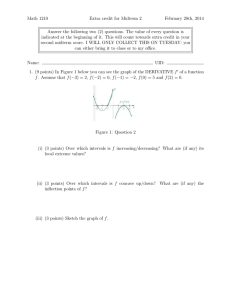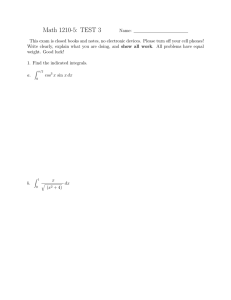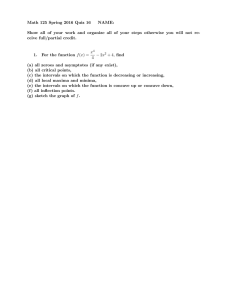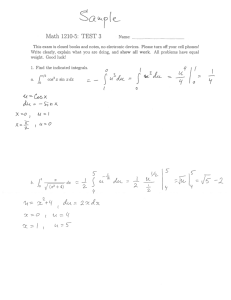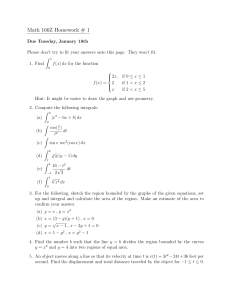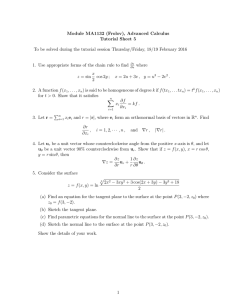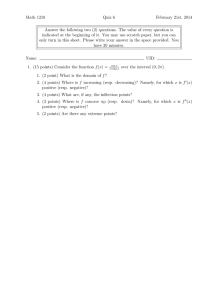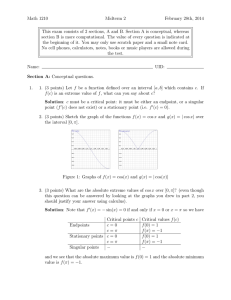Math 1210 Midterm 2 February 28th, 2014
advertisement
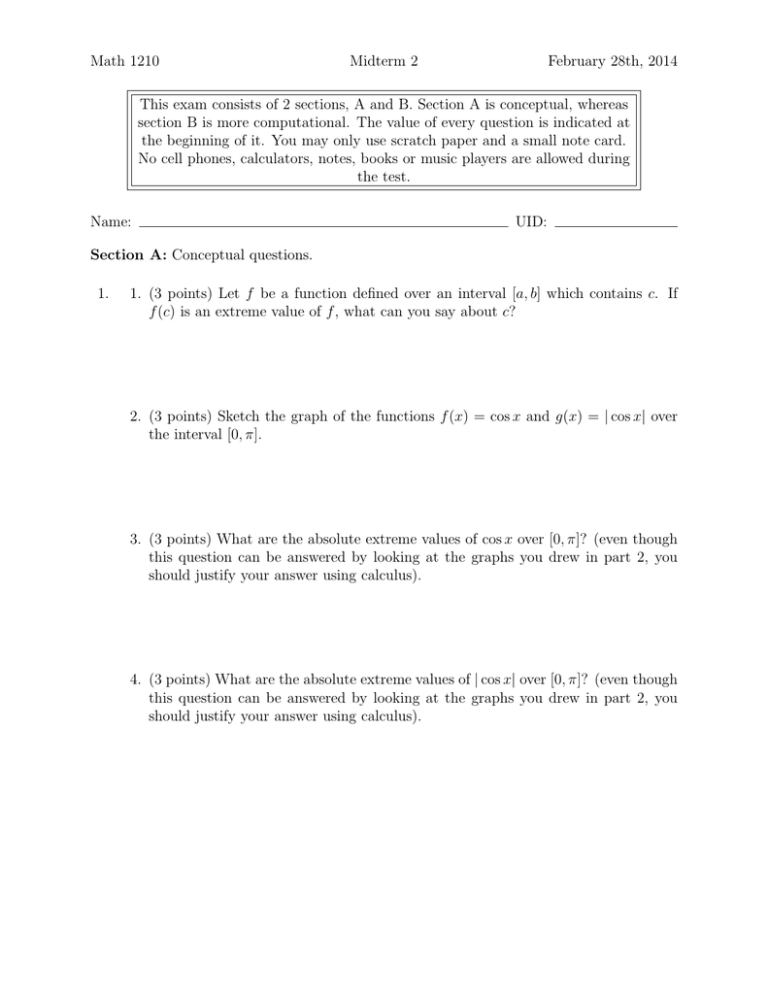
Math 1210 Midterm 2 February 28th, 2014 This exam consists of 2 sections, A and B. Section A is conceptual, whereas section B is more computational. The value of every question is indicated at the beginning of it. You may only use scratch paper and a small note card. No cell phones, calculators, notes, books or music players are allowed during the test. Name: UID: Section A: Conceptual questions. 1. 1. (3 points) Let f be a function defined over an interval [a, b] which contains c. If f (c) is an extreme value of f , what can you say about c? 2. (3 points) Sketch the graph of the functions f (x) = cos x and g(x) = | cos x| over the interval [0, π]. 3. (3 points) What are the absolute extreme values of cos x over [0, π]? (even though this question can be answered by looking at the graphs you drew in part 2, you should justify your answer using calculus). 4. (3 points) What are the absolute extreme values of | cos x| over [0, π]? (even though this question can be answered by looking at the graphs you drew in part 2, you should justify your answer using calculus). 2. (9 points) In Figure 1 below you can see the graph of the derivative f 0 of a function f . Assume that f (−3) = 2, f (−2) = 0, f (−1) = −2, f (0) = 5 and f (2) = 0. Figure 1: Question 2 (i) (3 points) Over which intervals is f increasing/decreasing? What are (if any) its local extreme values? (ii) (3 points) Over which intervals is f concave up/down? What are (if any) the inflection points of f ? (iii) (3 points) Sketch the graph of f . Page 2 Section B: Practical questions. 3. (12 points) Use the chain rule to compute the following derivatives (there is no need to simplify your answer). (i) (3 points) f (x) = (3x7 − 2)3 (3 − x2 )3 (ii) (3 points) f (x) = 1 (3x2 +x−3)9 (iii) (3 points) f (x) = cos (iv) (3 points) f (x) = cos4 x+1 x−1 x+1 x−1 4. (10 points) Suppose that the equation y + cos(xy 2 ) + 3x2 = 4 defines y as an implicit function of x (i) (6 points) Find y 0 = Dx (y) (ii) (4 points) Find y 00 = Dx2 (y) Page 3 √ 5. (8 points) A particle is moving along the graph of the curve y = x2 − 4 (for x ≥ 2) in such a way that its x-coordinate increases at a rate of 5 units per second. How fast is the y-coordinate increasing when x = 3? √ 6. (8 points) Approximate the value of 35.7 using differentials (you just have to write down the final expression that you would plug into your calculator). Hint: Recall that f (x + dx) ' f (x) + f 0 (x)dx if dx is a small perturbation of x. 7. (8 points) A flower bed will be in the shape of a sector of circle (a pie slice) of radius r and vertex angle θ. Find the values of r and θ such that the perimeter is minimum, assuming that the area is constant and equal to A. Hint: The perimeter of a sector of circle of radius r and vertex angle θ is rθ and its area is 21 θr2 . Page 4 8. (20 points) Consider the function f (x) = (x−1)(x−3) (x+1)(x−2) over (−∞, +∞). 1. (2 points) What is the domain of f ? Describe the discontinuities at the x-values for which f is not defined. 2. (2 point) Compute the limits limx→+∞ f (x) and limx→−∞ f (x). 3. (4 points) Over which intervals is f increasing (resp. decreasing)? Namely, for which x is f 0 (x) positive (resp. negative)? 4. (2 points) What are, if any, the local extreme values of f ? 5. (4 points) Over which intervals is f concave up (resp. down)? Namely, for which x is f 00 (x) positive (resp. negative)? 6. (2 points) What are, if any, the inflection points of f ? 7. (4 points) Sketch the graph of f . Page 5
